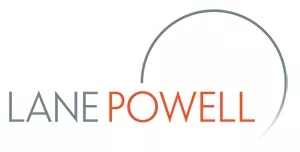United States:
Summary Of COVID EIDL Terms And Eligibility Requirements
COVID-19 Resource
15 October 2021
Lane Powell
To print this article, all you need is to be registered or login on Mondaq.com.
The U.S. Small Business Administration's (SBA) recently
expanded COVID-19 Economic Injury Disaster Loan (COVID EIDL)
program, which offers long-term, low-interest loans of up to $2
million to small businesses impacted by the pandemic, presents a
financing tool that most eligible businesses should consider.
We described the expansion of the COVID EIDL program in a
recent article. The below chart provides a high-level
summary of the SBA's guidance related to the program,
including the economic terms, eligibility requirements, and
documentation required to obtain a COVID EIDL loan. Notably, for
the COVID EIDL program, the SBA appears to have dispensed with its
usual requirement that borrowers demonstrate "substantial
economic injury" to be eligible for a disaster loan.
The SBA is accepting COVID EIDL applications here.
The program will end on the earlier of December 31, 2021, or the
date funds are exhausted.
Economic Terms
|
|
Loan Term
|
|
|
Loan Amount
|
- Up to $2 million
- The SBA will begin approval of loans over $500,000 on October
8, 2021
- Corporate groups cannot borrow more than $10 million in the
aggregate
- Maximum Loan Amount (up to $2 million) is calculated by the SBA
on a borrower by borrower basis
- The formula for most borrowers is 2019 gross receipts or
sales minus 2019 costs of goods
sold multiplied by two, or $500,000, whichever
is less
- For loans greater than $500,000.00 SBA will determine the
maximum loan amount by reviewing cash flow and existing debt
obligations of the borrower
|
|
Interest Rate
|
- For-Profit Businesses – 3.75 percent fixed
- Not-For-Profit Organizations – 2.75 percent fixed
|
|
Deferral Period
|
- Payments deferred for 24 months
- Interest will accrue during the deferral period
- Deferred interest to be paid over 28-year loan term following
deferral period
|
|
Use of Proceeds
|
- Allowed: Working capital to make regular payments for operating
expenses, including payroll, rent/mortgage, utilities, and other
ordinary business expenses, and to pay business debt incurred at
any time
- Allows pre-payment of non-federal debt and regular payments to
be made on federal debt
- Prohibited: Expanding business, prepaying federal debt,
starting a new business
|
|
Collateral
|
- No collateral required for loans of $25,000 or less
- Loans of $25,001 - $500,000 require that the SBA will file
UCC-1 covering the borrower's business assets
- Loans of $500,001 - $2 million require that the SBA will (i)
file UCC-1 covering the borrower's business assets and
(ii) obtain a best available mortgage on real estate owned by
the borrower
|
|
Personal Guaranty
|
- Required for loans over $200,000
- Full guaranty required from:
- All individuals or entities owning 20 percent or more of the
applicant business
- For sole proprietorships, the proprietor
- For independent contractors, the contractor
- For General Partnerships, all general partners
- For Limited Partnerships, all general partners and any limited
partner who owns 20 percent or more of the partnership
- For Limited Liability Entities, the Managing Member and any
member who owns 20 percent or more of the entity
- For Corporations, any individual or legal entity who owns 20
percent or more of the voting stock
- If no single owner owns 20 percent or more, then at least one
individual or entity must provide a full guaranty
|
Eligibility
|
|
Size
|
- A business that, together with affiliates, has not more than
500 employees
- A business that, together with affiliates, has more than 500
employees and
(a) is assigned a NAICS code beginning with:
- 61 Educational Services;
- 71 Arts, Entertainment, and Recreation;
- 72 Accommodation and Food Services;
- 213 Support Activities for Mining; Industry group;
- 3121 Beverage manufacturers;
- 315 Apparel Manufacturing;
- 448 Clothing and Clothing Accessories Stores;
- 451 Sporting Good, Hobby, Book, and Music Stores;
- 481 Air Transportation;
- 485 Transit and Ground Passenger Transportation;
- 487 Scenic and Sightseeing Transportation;
- 511 Publishing Industries (except Internet);
- 512 Motion Picture and Sound Recording Industries;
- 515 Broadcasting (except Internet);
- 532 Rental and Leasing Services; and
- 812 Personal and Laundry Services;
(b) employs not more than 500 employees per physical location;
and
(c) has no more than 20 locations (this includes the number of
locations that your affiliates have, if any)
|
|
Affiliation
|
- "Affiliate" means any business in which a borrower:
(i) owns at least 50 percent; (ii) has a right to profit
distributions of at least 50 percent; or (iii) has the
contractual authority to control the direction of the business
- Affiliate status measured as of January 31, 2020
|
|
Credit Score
|
- Loans of $500,000 or less require a minimum credit score
of 570
- Ability to repay determined by credit score only
- Loans greater than $500,000 require a minimum credit score
of 625
- Ability to repay determined by (i) cash flow analysis
conducted by the SBA and (ii) existing debt obligations of the
borrower
- Loan amount determined in part by the ability to repay
|
|
Immigration Status
|
- For-profit businesses other than sole proprietorships: The
business must have a valid IRS-issued tax identification number
(TIN). Each owner, member, partner, or shareholder of 20 percent or
more of the business must be a U.S. citizen, non-citizen national,
or qualified alien with a valid SSN
- Sole proprietorships: U.S. citizens, non-citizen nationals, and
qualified aliens with a valid SSN are eligible
|
|
Ineligible Entities (non-exhaustive list)
|
- Businesses not in operation on or before January 31, 2020
- Businesses engaged in illegal activity at federal, state, or
local level (including cannabis businesses)
- Businesses primarily engaged in lobbying or political
activities
- A business that is a debtor under chapter 7 of the Bankruptcy
Code or under another chapter of the Bankruptcy Code but a plan of
reorganization has not been confirmed
|
Required Documentation
|
|
Generally
|
- 2019 Federal Income Taxes, including all schedules, for the
applicant business
- 2020 Federal Income Taxes, including all schedules, for the
applicant business (if available)
- If the most recent Federal income tax return has not been
filed, a year-end profit-and-loss statement and balance sheet for
that tax year
- IRS Form 4506-T
- Board resolution or certificate of authority providing
authority to commit the business to the loan
- Copy of government-issued photo identification of each
principal owning 20 percent or more of the applicant business
- Current year-to-date profit-and-loss statement
- For loans less than or equal to $500,000: Schedule of
Liabilities listing all fixed debts
|
|
For Loans )$500,000
|
- SBA Form 2202 – Schedule of Liabilities
- List of real estate owned
- SBA Form 413 – Personal Financial Statement for general
partners, managing members, and all owners of 20 percent or more of
the applicant business
|
The content of this article is intended to provide a general
guide to the subject matter. Specialist advice should be sought
about your specific circumstances.
POPULAR ARTICLES ON: Coronavirus (COVID-19) from United States
Are Your NDAs Up To Date?
Wolf, Greenfield & Sacks, P.C.
Nondisclosure agreements (NDAs) can be used to protect companies' confi dential and trade secret information. But you should resist the urge to have a vendor...
Legal Implications Of New York Times vs. OpenAI
BoyarMiller
The New York Times recently filed a landmark lawsuit against OpenAI and Microsoft, accusing them of copyright infringement in the training of the chatbot ChatGPT which launched just over a year ago.



